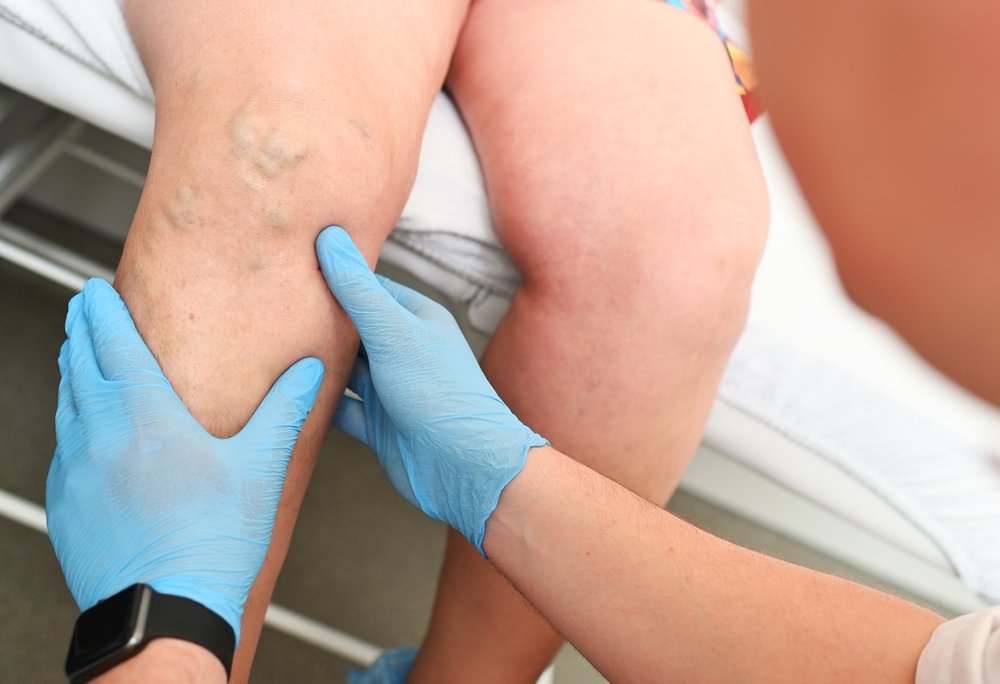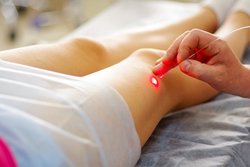 Venous insufficiency is a common yet often overlooked condition that affects a sizable portion of the adult population. It occurs when the valves within the veins don't work as they should, causing blood to pool in your lower legs. While discomfort and visible varicose veins are the initial signs, the condition’s impact can worsen, leading to more severe complications. But what, ultimately, is the most serious complication of venous insufficiency or Varicose Veins? In this comprehensive guide, we'll explore the cascade of events that can unfold if this circulatory concern remains unaddressed.
Venous insufficiency is a common yet often overlooked condition that affects a sizable portion of the adult population. It occurs when the valves within the veins don't work as they should, causing blood to pool in your lower legs. While discomfort and visible varicose veins are the initial signs, the condition’s impact can worsen, leading to more severe complications. But what, ultimately, is the most serious complication of venous insufficiency or Varicose Veins? In this comprehensive guide, we'll explore the cascade of events that can unfold if this circulatory concern remains unaddressed.
Understanding Venous Insufficiency & Varicose Veins
Before we focus on the worst-case outcomes, it's vital to understand the mechanics of venous insufficiency. Normally, your leg muscles contract and push blood up your veins, where one-way valves help keep blood moving toward your heart. If these valves are weakened or damaged, it can lead to a backflow of blood, causing venous insufficiency.
The primary symptoms of this condition include:
- Swelling in your legs and ankles
- Aching or pain in your legs
- Itchiness or redness of the skin
- Cramping and throbbing
- Varicose veins
For many, these signs are a distressing but manageable aspect of daily life. However, left unchecked, they could be indicative of a much more concerning issue beneath the skin’s surface.
The Most Severe Consequence: Deep Vein Thrombosis
Deep vein thrombosis (DVT) is a potentially life-threatening condition that typically occurs in the deep veins of the lower leg and thigh. It’s when a blood clot forms in a vein, impeding normal blood flow. If a part of the blood clot breaks off, it can travel to the lungs, causing a pulmonary embolism, an acute and dangerous condition that requires immediate attention.
The risk factors and symptoms of DVT include:
- Prolonged immobility, such as sitting during long flights.
- Certain medications
- Family history of blood-clotting disorders
- Pulmonary Embolism Symptoms: Unexplained sudden onset of shortness of breath, chest pain, or a fast heart rate.
Given the gravity of these conditions, it's apparent that the seemingly benign issues associated with venous insufficiency should not be overlooked or underestimated.
Ulcers and Bleeding: Visible Signs of Venous Insufficiency’s Progression
Ulcers, particularly venous stasis ulcers, are a chronic wound that develops on the lower leg. They often appear as a result of damaged vein valves or an injury, but venous insufficiency can significantly contribute to their formation. These ulcers are difficult to heal and prone to infections, becoming an enduring and painful issue for those affected.
Bleeding from varicose veins is another visible and alarming escalation of venous insufficiency. While typically not life-threatening, it is unsettling and can be profuse due to the high pressure within these dilated and weakened veins.
The presence of ulcers and episodic bleeding should serve as an impetus for anyone with venous insufficiency to seek professional medical evaluation and treatment promptly.
Prevention and Treatment
Thankfully, there are several steps individuals can take to reduce the risk of the complications associated with venous insufficiency. The first step would be an evaluation by a Board Certified Vein & Vascular Specialist ( MD ); or a Vascular Surgeon; who has undergone extensive formal training in understanding these conditions. Also, there are simple strategies like exercising, maintaining a healthy weight, and elevating the legs can help improve blood circulation. Medical intervention might involve minimally invasive treatment options such as sclerotherapy or endovenous laser therapy, which aim to close or remove the affected veins, allowing the body to naturally redirect blood flow.
Lifestyle adjustments and timely consultations can thus play a pivotal role in preventing the devastating complications of venous insufficiency and maintaining a high quality of life.
Summing Up
The critical factor to take away from this discussion is that venous insufficiency is more than just a cosmetic bother — it’s a condition that can spiral into serious health risks if left unmanaged. Individuals experiencing symptoms related to venous insufficiency should seek professional help to understand their risk factors and treatment options.
Ultimately, awareness and early intervention are key to avoiding the most severe consequences of venous insufficiency. By staying informed and proactive, patients can reduce the risk of complications and enjoy a healthy and active life, free from the burden of this condition's more serious manifestations.
Venous insufficiency deserves attention, awareness, and prompt medical care. Understanding and heeding these principles can make all the difference for those at risk and serve as a beacon for a healthier vascular future.
To understand more about these severe life threatening conditions, as they relate to Varicose Veins, Venous Insufficiency; you can make an appointment with our Vascular Specialist, a Board Certified Vascular & Endovascular Surgeon; Dr. Gulshan Sethi ( MD, DABVLM) or call us at 516-606-7811.
